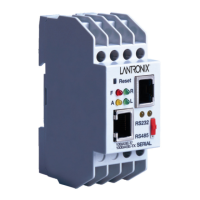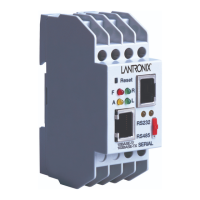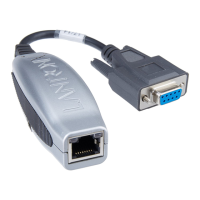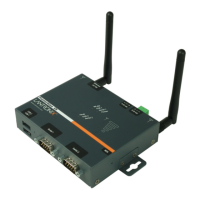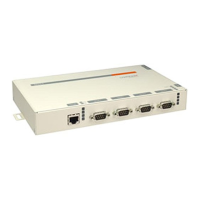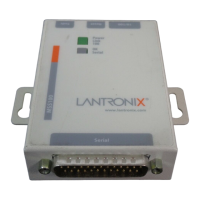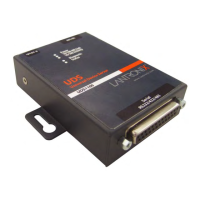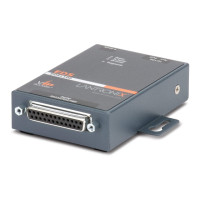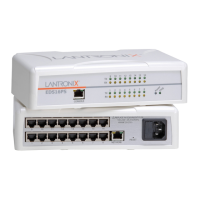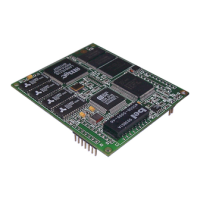XPort® Device Server User Guide 80
Examples
Example 1: PC sends command 10h to find out which configurable pins are available
as GPIO.
PC -> XPort: 10h, 00h, 00h, 00h, 00h, 00h, 00h, 00h, 00h
XPort -> PC: 10h, 03h, 00h, 00h, 00h
Command details:
10h = command 10h
00h, 00h, 00h, 00h = ignored
00h, 00h, 00h, 00h = ignored
Response details:
10h = response to command 10h
03h, 00h, 00h, 00h =
bits 0 and 1 are 1 →CP1 and CP2 are configured as GPIOs.
bit 2 is 0 → CP3 is configured as either serial control or diagnostics.
The other bits are ignored because there are only three configurable pins on
the XPort module.
Example 2: PC sends command 1Bh to change the current states of GPIO 0 and 1.
PC -> XPort: 1Bh, 01h, 00h, 00h, 00h, 00h, 00h, 00h, 00h
XPort -> PC: 1Bh, 05h, 00h, 00h, 00h
Command details:
1Bh = command 1Bh
01h, 00h, 00h, 00h = the mask that determines which GPIOs will be changed.
bit 0 is 1 → GPIO0 will be changed.
bit 1 is 0 → GPIO1 will remain the same.
00h, 00h, 00h, 00h = the new states
bit 0 is 0 → GPIO0 will become 0.
bit 1 is ignored since it is masked out.
Response details:
1Bh = response to command 1Bh
05h, 00h, 00h, 00h =
bit 0 is 1 → GPIO0 = 1
bit 1 is 0 → GPIO1 = 0
bit 2 is 1 → GPIO2 = 1
The other bits are ignored because there are only three configurable pins on
the XPort module.
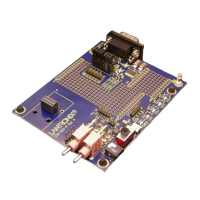
